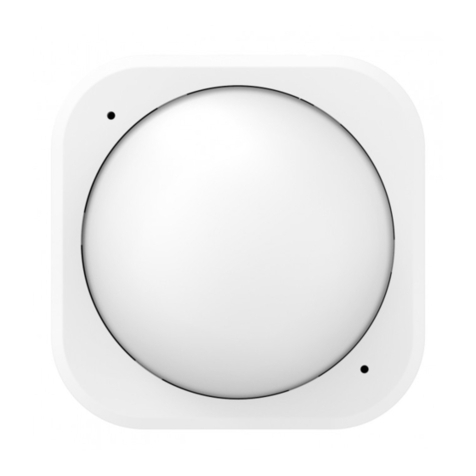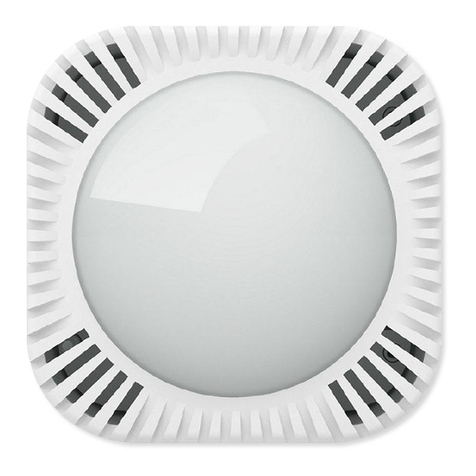
Product Description
This device measures the three air quality parameters temperature, humidity and dew point and reports
them to a central controller. Besides this, the device can directly control groups of other Z-Wave devices
on over- and undershooting a set temperature and/or humidity parameter. This can be used to establish
control loops for temperature and humidity. The device wakes up every 15 minutes to measure the
values and it will send unsolicited reports when values change. Additionally, the device will report all
values on request.
The AërQ Sensor is actively monitoring the danger of mould in a room based on the temperature and
humidity and will issue alarm warnings when critical air conditions met. Wireless Alarm and red and a
green blinking LED will indicate a mould condition. This local LED warning function is also available
when the device is not included in any Z-Wave network and works stand alone.
Prepare for Installation / Reset
Please read the user manual before installing the product.
In order to include (add) a Z-Wave device to a network it must be in factory default state. Please make
sure to reset the device into factory default. You can do this by performing an Exclusion operation as
described below in the manual. Every Z-Wave controller is able to perform this operation however it is
recommended to use the primary controller of the previous network to make sure the very device is
excluded properly from this network.
Reset to factory default
This device also allows to be reset without any involvement of a Z-Wave controller. This procedure
should only be used when the primary controller is inoperable.
Keep the button pressed for 10 seconds. Then the green LED will start blinking. Release the button,
when the LED stops blinking. Your device is reset to factory default now.
Safety Warning for Batteries
The product contains batteries. Please remove the batteries when the device is not used. Do not mix
batteries of different charging level or different brands.
Installation
Just place the device on any flat surface. Please keep in mind that the temperature may be different in
different locations inside the room. If placed too close to the heating both temperature, humidity and
dew point values may be wrong. The device is IP 0 rated. This means that is must not be exposed to
direct water (rain). It is safe to use the device in a humid environment such as a bathroom or dedicated
washing facility.
Inclusion/Exclusion
On factory default the device does not belong to any Z-Wave network. The device needs to be added to
an existing wireless network to communicate with the devices of this network. This process is
called Inclusion.
Devices can also be removed from a network. This process is called Exclusion. Both processes are
initiated by the primary controller of the Z-Wave network. This controller is turned into exclusion
































